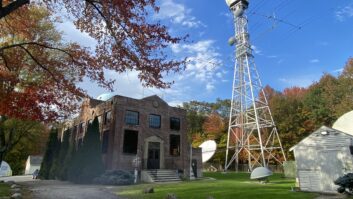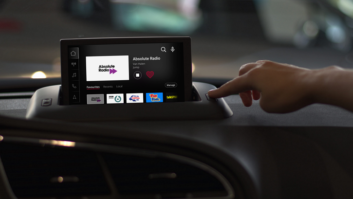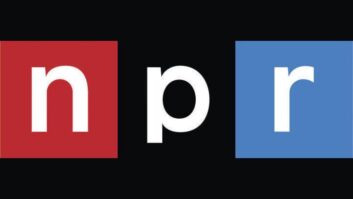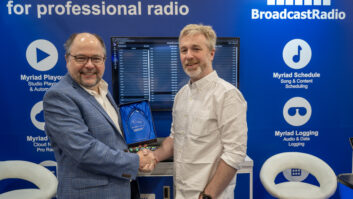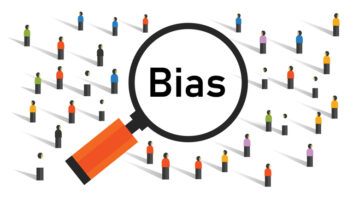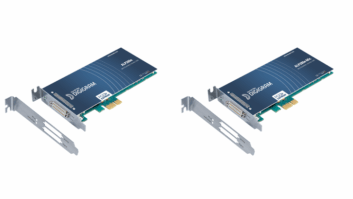WASHINGTON NPR intends to take a big step into the radio surround sound arena with a New Year’s Eve broadcast.
Network and station engineers as well as suppliers involved have been scrambling in recent weeks to prepare for the Dec. 31 hookup.
Participants believe this is the first U.S. attempt to create a distributed network feed of surround sound and the first U.S. broadcast of surround material on a national scale. The network believes that, along with analog with HD Radio and supplemental audio, surround sound is part of the future of terrestrial radio. It wants a toehold in that technology to broadcast its high-end content.
In an exclusive behind-the-scenes look at preparation for the broadcast, Radio World observed the first training sessions for engineers taking part in the event, which were held at National Public Radio headquarters.
NPR has been keeping an eye on surround sound developments for a while. In fact, the network conducted early recordings during experiments in Virginia’s Luray Caverns in the Shenandoah Valley in the early 1990s, said Mike Starling, vice president of engineering for NPR. The concept has received new momentum in recent months with experiments at local stations like KUVO(FM) in Denver and WGUC(FM) in Cincinnati.
Now, with surround sound enjoying 30 percent penetration into America’s homes and four technologies vying for market leadership in HD Radio surround sound, NPR intends to record, produce and air most of its New Year’s Eve live jazz broadcast in surround sound.
“It’s going to be a straight vertical climb,” said Jan Andrews, NPR senior engineer, remarking on the network’s need for hardware and training for its audio engineers and for those at its participating member stations to pull off the broadcast, which also is celebrating its 25th anniversary.
The project will involve four stations recording source programming in 5.1 audio, and sending it via bonded ISDN lines secured for this event to NPR, where the feed is uplinked to the Public Radio Satellite System. NPR plans to intersperse that material with its own pre-recorded 5.1 concerts for a total of seven 5.1 concerts broadcast on New Year’s Eve.
Most listeners will hear a stereo broadcast. But NPR executives see this as a notable experiment with surround. Project managers want to see how such a surround distribution project might work and how it will sound, both in the few surround receivers that can decode it, and equally important, in non-surround analog stereo and HD Radio digital receivers that will pick up a stereo signal.
The impact on existing analog or HD Radio stereo is an important part of the experiment, they say.
‘Toast of the Nation’
The broadcast, “Toast of the Nation Welcomes 2005,” is to include 13 hours of jazz and blues from various U.S. venues as well as Paris, although the French portion of the broadcast won’t be in surround.
NPR and WBGO(FM) in Newark, N.J., are presenting the event, which is set to include live performances recorded in 5.1 and transmitted to NPR by WGBH(FM) in Boston; KUVO in Denver; KCSM(FM) in San Mateo, Calif. with technical support from NPR West; and several pre-recorded 5.1 concerts from the Apollo Theatre in New York; the Ground Zero Blues Club in Clarksdale, Miss.; New York’s Lincoln Center and other venues. The overnight broadcast is set to begin at 5 p.m. Eastern and conclude at 6 a.m.
Providing such a broadcast in surround sound is a huge undertaking, according to those involved. The network, vendors and participants were figuring out costs, equipment needs and staffing in late November. Even without the surround element, this annual broadcast requires 30 to 40 people, said Ben Roe, NPR director of music. That’s counting NPR employees and those of other stations and venues, he said.
“At NPR, we have a director, a studio host, producers, master control folks sending it (the broadcast) out, other folks dialing ISDN lines and pulling them in and a telecom manager,” said Roe. “We order the ISDN lines a couple of months in advance. I’ve got to make sure the satellites are working and we’ve got redundancy.”
Consumer expectations
NPR wants to be first radio network in the surround sound broadcast arena.
“NPR, for a long time, has felt that surround sound would be part of the future audio environment, ” said Starling. “At some point in the future it may be a de facto consumer expectation,” given the rate at which surround has crept into homes and now automobiles.
He and other NPR executives characterize the New Year’s Eve event as an experiment, “but it looks like one that that has imminent prospects for a broad deployment. We’re early in the HD Radio transition, but this one fits nicely with its technology platform and its topology to work well in existing broadcasting plants.”
NPR is working with vendors Neural Audio, Harris Broadcast, DK-Technologies America and Blue Sky for the broadcast. NPR and participating stations will use Neural’s watermarked surround sound technology with the Harris NeuStar 5225 5.1 surround sound mix-edit transcoder and the NeuStar UltraLink digital radio audio conditioner.
A 5225 encoder/decoder is required at each station that seeks to uplink surround-encoded audio, as well as at the receive module at NPR. The audio codec conditioner would be used to reparse the audio and reduce noise to minimize codec artifacts before it is sent over the ISDN lines for this broadcast.
A surround project also requires corresponding support gear; and Harris hoped to provide DK-Technologies America MSD600++ 5.1 test and measurement meters as well as BlueSky ProDesk 5.1 and SkyOne 5.1 monitoring systems for use in the stations’ on-air monitoring and in their production facilities.
Roe said NPR expected to put together an equipment kit for each station and remote site. Still to be worked out in the weeks before the event was whether equipment would be loaned or purchased by the network and stations.
Of four surround technologies on the market adapting their systems for digital radio, Neural Audio’s system was chosen for this event. Starling credited Chief Engineer Mike Pappas of KUVO with “having an efficient, smart approach in how to do it,” referring to that station’s recent recording and broadcast of a Dianne Reeves concert in surround sound (Radio World, Nov. 17, page 4).
“This is a case where the network is paying attention to the leadership of a member station in pushing the envelope on something that has large implications for the system as a whole,” said Starling. The network has been impressed with the Neural product’s ability to “faithfully replicate whatever (image) you give it” as opposed to commercially-available surround recordings on CDs that are meant to impress listeners with almost ping-pong sound effects.
Existing plants can do this
Pappas believes the Neural surround system is relatively easy to use and inexpensive, and more important, that broadcasters can use it to record, mix and air surround sound audio with their plants as they exist today.
“The real advantage of the 5225 system is that it generates conventional stereo,” said Pappas. “So the only thing that changes is the guys out in the field doing the music mix will do it either in a quad setting, where you do two rear channels and a left and right (front channel), or you do a 5-1 mix with a left-center-right plus two rear channels. You run it through a 5225 box, which makes it watermarked stereo.”
This means the encoded surround audio can be edited, said Pappas and Robert Reams, Neural’s CTO and co-founder. Reams said that Neural’s is not a matrix – or what is sometimes called “pseudo” – 5.1 system.
Pappas gave an example of what can happen to the audio with a matrix system: “Violins, for example, based on what note they’re playing, change where they’re located in the sound field and can do things like start in the front and end up in the rear channels – which may make an effective parlor trick but for music, aren’t really very appropriate.”
“The watermarking we use, we describe the content spatially, and use an upmix system, is similar to other spatial-style encoders,” said Reams. “But instead of multiplexing the spatial information into the digital bitstream, we embed it in the form of a watermark in the waveform of the audio. That’s why you can edit it.”
Pappas and Starling said the Neural system produces an image with excellent stability.
Another concern Reams sought to dispel is that the watermark is not robust. He said NPR ran tests in which it sent the watermark through several codecs in tandem and began dropping the data rates to see where the watermark would fail.
“Their discovery is, you can get to where the sound is awful and the watermark is 100-percent intact,” said Reams.
He said the NeuStar 5225 enables the broadcaster to receive 5.1 content, downmix it to 2.0 stereo for file storage and distribution, and upmix it for 5.1 monitoring in the studio or playback in the receiver. The NeuStar UltraLink makes the codec work more efficiently, said Mark Seigle, Neural vice president of business development. “It cleans the audio, which includes noise reduction and image packing.”
The UltraLinks likely will be used to help reduce MPEG encoding artifacts by conditioning the audio at each station before it is sent via ISDN lines to NPR’s Washington headquarters, Pappas said.
NPR needs to decide what type of audio mix to use for this event. For example, Pappas said, KUVO likes to give the listener the effect of being in the center of the first row of an audience, facing the stage.
Getting the right mix
“The nice thing about the Neural 5225 is that if you decide to do a conventional left-right mix for the front, it will phantom automatically a center channel for you on the receive side, so you don’t need to worry about doing a center channel if you don’t want to. For our application, we tend to use the center channel because we put vocalists in it,” Pappas said.
Part of the point of the recent KUVO broadcast was to prove that broadcasting in surround doesn’t distort the original sound, that the event can be broadcast and yet remain faithful to what the artists intended, he said.
For producers, Roe said, the challenge is to choose the standard for mixing in surround, such as whether to place listeners on the stage or farther back.
Pappas said that for the recent event at his station, listeners were not told the broadcast was in surround, as there are no decoders in the consumer marketplace. KUVO listeners heard the broadcast in stereo; some who called or e-mailed thought there was improvement in the stereo broadcast, he said.
Neural is providing test decoders for the NPR event so participating stations can hear the surround sound.
Pappas said his station has done 40 to 50 live 5.1 recording sessions over two years, although the Dianne Reeves concert was its largest effort, he said.
Starling said using the Neural equipment for the event also means the stations involved don’t need to rewire.
“You don’t have to add channels for a center speaker or for surround. You don’t have to go out and add three more channels to every control room in order to do this.”
Each site will transmit its audio to NPR via bonded ISDN lines with a total capacity of 256 kbps per stereo feed. The network will mix that audio with continuity and uplink the complete broadcast to member stations through the Public Radio Satellite System. All of its stations will receive the surround feed, although only stations with surround decoders could hear the surround; those without decoders hear stereo.
NPR hoped to conduct several dry runs of the broadcast before Dec. 31 to iron out problems. Listening rooms are planned at participating stations, in which VIPs including major donors, would be invited to hear the broadcast.
More than 100 stations have carried the event in the past, and NPR has a carriage agreement with the European Broadcast Union, said Starling. In Europe, broadcasters also have been experimenting with surround projects.
At CES, Neural planned to introduce an aftermarket surround sound decoder. The 12-volt automotive Spatial Environment Engine interfaces with stereo consumer head units and 5.1 amplification. Neural said the SEE decoder will be available to consumers late in the first quarter of 2005.
